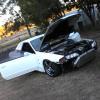Pfc D-jetro Needs Aftermarket Plenum/single Throttle?
Announcements
-
Similar Content
-
Latest Posts
-
If you're friendly with a workshop that has a large scraps bin you can always ask to dispose of there. Otherwise theres always the places like sims metal etc depending where you are at https://recyclingnearyou.com.au/cars
-
By Dose Pipe Sutututu · Posted
Yeah same as yours, however just sprung centre. Trying to prolong the box going KAPOW as long as possible lol -
By mtopxsecret6 · Posted
Hi everyone, I'm chasing the factory rear parcel shelf speakers for a coupe R32. Just seeing what's out there? Thanks -
Did you get the 230mm version? I’ve got the solid center version and it’s a dream to drive
-
Even GKTech's short nuts are only intended for 15mm spacers, and the OP's look like they might be only 10mm. So he'd have to rely on pockets in the wheel hub face to accept what sticks out past the spacer's face.
-






Recommended Posts
Create an account or sign in to comment
You need to be a member in order to leave a comment
Create an account
Sign up for a new account in our community. It's easy!
Register a new accountSign in
Already have an account? Sign in here.
Sign In Now